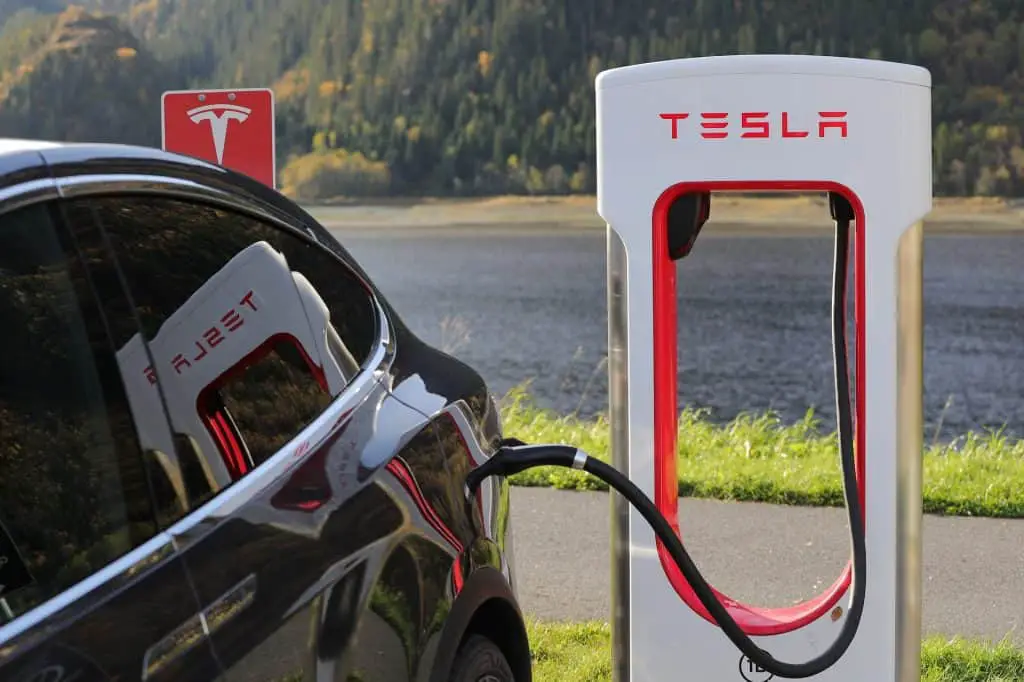There’s nothing quite so exciting as planning a road trip. Hitting the open road in your vehicle provides a luxurious freedom that few modes of transportation can touch. For owners of electric vehicles (EVs), the road trip represents a bit of a Holy Grail. While EV owners enjoy easy access to electric vehicle charging stations in urban centres, many have yet to venture onto the open road to tackle longer haul road trip adventures beyond the city.
This is changing, as the range of EVs continues to increase and owners demonstrate a desire to test the limits of their powerful electric vehicles. Whether it’s a long weekend loop in the Catskills or a tour of Canada’s stunning National Parks in British Columbia and Alberta, these tips on how to plan a road trip with electric vehicles will get you revved and ready to hit the road.How to Plan Electric Vehicle Road Trips
How to Plan Electric Vehicle Road Trips
First off, an EV road trip ain’t like your gas-powered road trip. It’s a whole new way of thinking about travelling by car over long distances. You won’t be ready to gas up and go after 5 minutes. It’s going to take longer and require more planning, but the zero-emission rewards are well worth it. Our tips will help you navigate your way to a stellar, zero-emission road trip.

A new electric reality
The Canadian government has set 2035 as the mandatory target for the sale of zero-emission SUVs and light-duty trucks. That means the end of the sale of all combustible-engine run cars and light trucks. Reducing carbon emissions and meeting Canada’s climate targets are pressing necessities, if the summer of 2021 is anything to go by.
In 2020, ownership of electric vehicles in Canada represented 3.5 per cent of the total vehicle ownership rate of more than 24 million cars and light-duty trucks. It’s a growing segment of the car market, and there’s a wide variety of EV ownership between provinces; British Columbia and Quebec track higher at nearly 9 per cent; Ontario lags far behind at barely 2 per cent.
As far as electric vehicle rebates, BC has offered incentives and is committed to completing its own public electric vehicle fast charging network by 2040. As of December 2020, there were 205 stations out of a planned 400 in British Columbia. However, not every province has seen the electric light, so to speak. Saskatchewan has slapped annual road-use fees of $150 on EV owners.
In the United States, electric car sales topped 300,000 between 2018 and 2019. This growth was largely driven by the rise of the Tesla Model 3, Elon Musk’s more cost-effective $35,000 electric car, which remains one of the most “affordable” electric vehicles on the market.
As the provinces in Canada and states in America vary in their embrace of green vehicle technology, there is an uneven charging network across the country, which can make road trip planning a challenge. But the network is growing every week, and you can find stations in parks, shopping mall parking lots, hotels, small businesses and even gas stations.
Best Apps for Planning Electric Vehicle Road Trips
Technology is the driver (pun intended) of the electric vehicle movement. The software tech that manages the electric car is complex and communicates within the vehicle and without through GPS.
The car’s systems can find electric charging vehicle stations quite easily, however, when planning a electric vehicle road trip, advance planning through the use of helpful Apps downloaded to your smartphone is a necessity.
There are many apps to choose from, some of them are geographically-specific like the BC Hydro app in British Columbia. Tesla, Porsche, GM electric vehicles and other car manufacturers have their own Smartphone apps that ‘talk’ to the car and the charging station to monitor battery life and charging speed.
For road trip planning, we use the A Better Routeplanner (ABRP) app. This is an excellent road trip planning tool for electric vehicles. Simply select your vehicle type, plug in your starting point and destination, and the app aggregates your route, highlighting the charging stations and types (see below to get familiar with the different kinds of chargers.)
The app also provides distance and charging time estimates, so you can get a complete picture of the full length of your journey. Choose where you wish to stop to charge your car, and ABRP will present a complete route itinerary, including an estimate of your battery level at the final destination.
On our maiden EV road trip voyage in summer 2021, we used various apps including ABRP to plan our route. It located the necessary fast charging stops every 300 km or so, and calculated our estimated driving time to Jasper.
Other great apps include PlugShare, ChargeHub, OpenCharge map and many others. And don’t forget Google Maps, which highlighted some Parks Canada chargers that were not listed anywhere else; it saved us when we visited Jasper National Park on our most recent road trip through Banff, Golden and Revelstoke.
Plan your road trip itinerary according to the charging network on route. Know the battery range of your particular vehicle. For example, the Chevy Bolt can get about 416 km/259 miles, while the Porsche Taycan and Tesla Model S can get up to 420 km/418 m or 627 km/390 miles.
Remember that your vehicle’s estimated range will be affected by your driving style, the climate you’re driving in, and your use of creature comforts such as air conditioning or heat. Take this into consideration when planning your route and daily mileage. And don’t wait until your estimated range is down to the last 50 km/miles before finding a charging station.
Know the charging situation at your destination
The North American electric vehicle charging network is still a work in progress. While EV charging networks are most robust in urban centres and cities, in the hinterland, it’s a different story.
Getting to your destination may not be the issue in some provinces or states. Heading further afield, as we did on our road trip to Jasper National Park in summer 2021, we carefully planned out our charging course and schedule to ensure that we’d arrive with ‘power in the tank’ so to speak.
But we underestimated the charging system in Jasper itself. And we got caught. More remote destinations will have varied (or little) EV infrastructure, so do your research.
Use your advance planning skills, look for accommodations with EV charging stations, and chat up other EV owners. Vehicle owners are great ambassadors and ready to help and share wisdom from their experiences. Chatting with another EV owner and learning about an unmapped Parks Canada charging station is is what saved us in Jasper.
And I’m pleased to note that just weeks after our visit, Jasper installed 11 new fast charging stations in the downtown. Things are changing fast and the charging network will get better and better going forward.

Planning reduces range anxiety
Knowing your EV vehicle and properly planning your road trip will help ensure that you maximize your range, and reduce that all-important range anxiety. Use the onboard computer to help you determine distances to charging stations and plan your stops accordingly. Employ regenerative braking wisely to slow down as it recharges those batteries for some extra range oomph. Going downhill will do the same.
Remember that your vehicle’s range will be impacted by your driving style, the landscape and even the weather. Are you going through mountain ranges or flat highways? Is the heat or air conditioning on? That will impact the battery range.
But again, you’re driving a very smart car. Set your EV to ‘range mode’ (if applicable) to ensure the best battery range possible.
Prepare a Plan B
We found out first hand that best laid plans can go awry. If and when a charging station is occupied, broken, or malfunctioning, you’ll need to have a back up plan. This could mean knowing where an alternate EV station is, or waiting your turn at the charger. FYI: Most chargers have a 40 minute courtesy limit.
Some owners purchase and carry an extra charging cable to use on a propriety system, such as Tesla’s, which is making its Supercharger stations available to non-Teslas. In a pinch, check in with a friend’s (or even an angel stranger’s) home or garage that you could use in an emergency.
As Canada’s and the United States’ EV charging network matures and grows, these systems will improve and become more robust. The time it takes to charge an electric vehicle is also expected to reduce significantly.
Plan charging stops around towns, activities or meal breaks
While road tripping, look for DC fast charging stations whenever possible. You’ll spend on average about 30-45 minutes charging, freeing yourself to wander a downtown area, visit a local attraction, grab a coffee or lunch, and pop to the restroom. EV road tripping may be slightly slower than gas-powered travel, but there are great benefits to you, the local economy and the environment.
During our EV road trip adventures, we discovered new places, restaurants and attractions by stopping to charge our electric vehicle. The journey became part of the adventure, not just a means of getting from Points A to B in the fastest time possible.
If you just want to sit and wait, pack an e-reader, book, or catch up on social media or emails. Downtime isn’t a bad thing. And don’t forget the snacks – they’re always an important part of any road trip!
Enjoy the silence and the zero emissions
Electric vehicles are much quieter than gas-powered cars. We quickly became used to the beautiful sound of silence on the road, and emerged from a 10-hour driving day refreshed rather than exhausted by loud engine noise. We also liked knowing that our road trip (which in summer 2021 totalled 1,800 km) didn’t contribute any carbon pollution to the environment.
EV Charging Stations 101: the different kinds of charging stations
Level 3 or DC Fast Charger: This is the mack daddy of chargers. The DC Fast Charger (or Tesla Supercharger) is the one to find when planning a road trip. A fast charger can often get your car’s battery level to about 90 percent in 30 to 45 minutes, depending on your car’s charge level.
Level 2: These chargers are often found in public and commercial spaces like malls, and in more remote locations like National Parks. Level 2 chargers can get you close to a full charge in about 8 hours. These work well when charging overnight at a hotel, but they are time consuming, and not ideal for on-the-road charging.
,
Level 1: The slowest type of charging unit and is the type installed at one’s home where you charge your electric vehicle overnight while you sleep. This charger can typically be done using a regular wall outlet and adapter for your car. A full charge can take up to 24 hours (or longer) so this type of charging is best done in your garage or driveway when not using the vehicle, or as an emergency backup.
More Road Trip Tips and Stories
11 Canadian Road Trips You Need to Take
How to Survive a Road Trip with Teenagers
8 of the Most Spectacular Drives in BC
How to Travel in Style on Road Trips
Got EV road trip tips to share? Leave your comments and tips below!
- 8 of the most spectacular BC roadtrips - March 28, 2024
- 21 fantastic things to do in Whistler in summer - March 23, 2024
- 7 unique places to experience Ainu culture in Hokkaido - March 22, 2024
